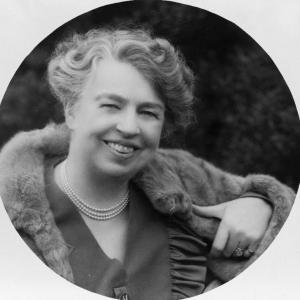Eleanor Roosevelt: An Agent of Social Change

Eleanor Roosevelt redefined the role of the First Lady as an agent of social change. Eleanor helped to create The Universal Declaration of Human Rights, which remains one of her greatest legacies.
- Appx. 60 minutes
- The purpose of this lesson is to learn about Eleanor Roosevelt as an agent of social change as the First Lady of the United States and later as a representative to the United Nations. Moreover, students will learn how Mrs. Roosevelt used her position as the First Lady to become a champion of human rights which extended after her time in the White House. Students will read primary sources to better understand the legacy of Mrs. Roosevelt.
- Students should have some background on The Great Depression, The New Deal, and World War II. Depending on students’ prior knowledge, the teacher could consider giving some background reading on Eleanor Roosevelt from The Eleanor Roosevelt Papers Project: https://erpapers.columbian.gwu.edu/anna-eleanor-roosevelt
Do Now: 10 minutes
- Students will begin class by viewing this brief video clip: https://www.pbs.org/video/american-experience-fdrs-first-lady-eleanor/
- Think-Pair-Share: Student must write down a response to the following question: What essential role did Eleanor Roosevelt play during Franklin Roosevelt’s presidency?
- Students will discuss their thoughts with a partner and then with the class.
Activity: A-B-C Reading Activity; Appx 40 minutes.
- Students will be divided by the teacher into groups of 3.
- Students will engage in a reading activity based on three primary sources all written by Eleanor Roosevelt. (See handout)
- Each student is given a letter: A, B, or C.
- Each student will start with document 1. They will read it silently and underline quotes and statements that the feel are the most important in understanding Eleanor Roosevelt as an advocate for social change.
- When all students in the group have completed reading document 1, student A will share a statement he/she underlined; student A cannot explain the quote, he/she must simply state it and remain silent. Students B and C will conjecture as to why student A picked this quote. When students B and C have completed, student A will have the opportunity to explain why he/she chose the quote. This continues with students B and C contributing their selected quote. This sort of activity allows students to engage with the material by analyzing selected quotes and statements. The purpose is to promote dialogue about the texts.
- The activity then continues in the same way with documents 2 and 3. It is the responsibility of the students to complete all three documents.
Closing: 10 minutes
- When the groups complete all three documents, each group of three will have to find another group of three and discuss the statement: How was Eleanor Roosevelt an agent of social change? As a group of 6 they will prepare one statement to share with the class.
- Each group of 6 will share their statement with the class. In the remaining class time, students will discuss the various statements with the entire class.
- Choose a letter to read addressed to Mrs. Roosevelt.
- Now that you have had the chance to hear from Mrs. Roosevelt through her own words, consider how others viewed her in her role as the First Lady. What expectations did these Americans have for their First Lady? Be prepared to share your findings in class tomorrow. (Depending on what resources are available, teachers can consider having students post their response on an online blog or discussion board).
- Letters can be found on the following website: http://www.digitalhistory.uh.edu/active_learning/explorations/children_depression/help_president.cfm
- D2.Civ.2.9-12. Analyze the role of citizens in the U.S. political system, with attention to various theories of democracy, changes in Americans’ participation over time, and alternative models from other countries, past and present.
- D2.Civ.3.9-12. Analyze the impact of constitutions, laws, treaties, and international agreements on the maintenance of national and international order.
- D2.Civ.5.9-12. Evaluate citizens’ and institutions’ effectiveness in addressing social and political problems at the local, state, tribal, national, and/or international level.
- D2.His.3.9-12. Use questions generated about individuals and groups to assess how the significance of their actions changes over time and is shaped by the historical context.
- D2.Civ.14.9-12. Analyze historical, contemporary, and emerging means of changing societies, promoting the common good, and protecting rights.
Common Core:
CCSS.ELA-LITERACY.RH.11-12.1
Cite specific textual evidence to support analysis of primary and secondary sources, connecting insights gained from specific details to an understanding of the text as a whole.
CCSS.ELA-LITERACY.RH.11-12.2
Determine the central ideas or information of a primary or secondary source; provide an accurate summary that makes clear the relationships among the key details and ideas.
CCSS.ELA-LITERACY.SL.11-12.1.B
Work with peers to promote civil, democratic discussions and decision-making, set clear goals and deadlines, and establish individual roles as needed.
CCSS.ELA-LITERACY.SL.11-12.1.C
Propel conversations by posing and responding to questions that probe reasoning and evidence; ensure a hearing for a full range of positions on a topic or issue; clarify, verify, or challenge ideas and conclusions; and promote divergent and creative perspectives.
CCSS.ELA-LITERACY.SL.11-12.1.A
Come to discussions prepared, having read and researched material under study; explicitly draw on that preparation by referring to evidence from texts and other research on the topic or issue to stimulate a thoughtful, well-reasoned exchange of ideas.
